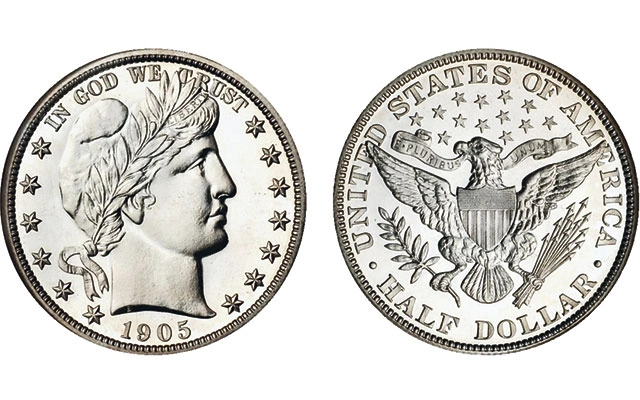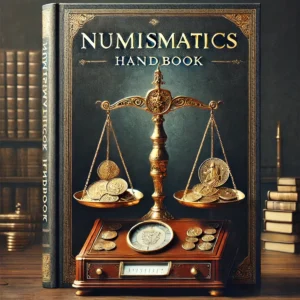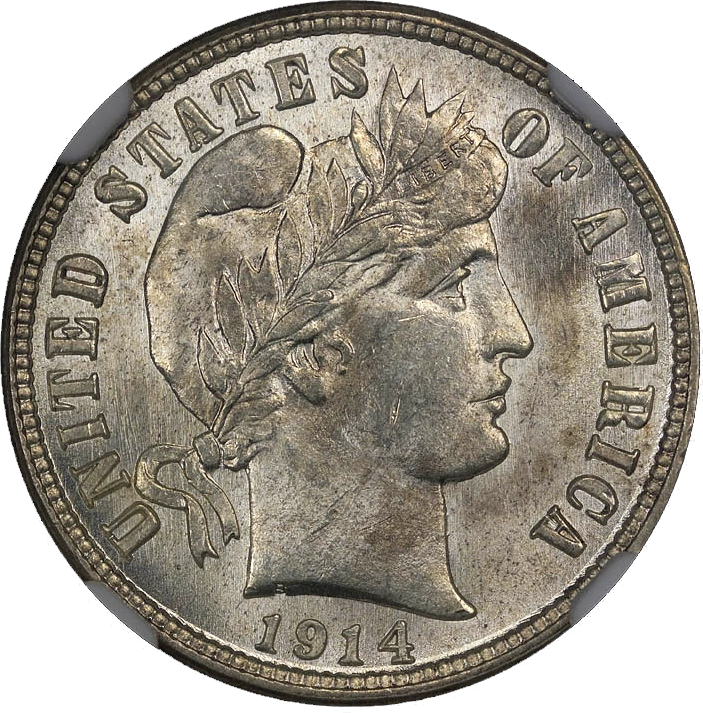Barber Coins: Key Dates, Errors & Pricing
Explore the historical importance, key varieties, and growing collector demand behind Barber Dimes, Quarters, and Half Dollars — a foundational pillar in classic U.S. coin collecting.

📘 Download the full guide: Numismatics Handbook — A +135-page expert resource on U.S. coin collecting.
Why Barber Coins Matter
Barber coins — including dimes, quarters, and half dollars minted between 1892 and 1916 — were designed by Charles E. Barber, the sixth Chief Engraver of the U.S. Mint. While their designs were initially criticized as “too plain” compared to the intricate Seated Liberty and Morgan Dollar series, Barber coins have earned respect among collectors for their craftsmanship, scarcity, and role in American history.
Collectors love Barber coins for:
- Low surviving populations, especially in high grades (XF or better)
- Rich ties to turn-of-the-century American history, from the Gilded Age to World War I
- Broad set-building opportunities, including challenging full sets by date and mintmark
- Legendary rarities, such as the 1894-S Barber Dime
- Early examples of modern U.S. Mint craftsmanship, with improvements in striking techniques
Whether assembled piece by piece or as part of a larger type set, Barber coins offer a deeply rewarding challenge for serious numismatists.
Barber Coin Values & Key Dates by Type
| Year | Coin Type | Mint Mark | Est. Value (Avg.) | Rare Variant? |
|---|---|---|---|---|
| 1892-S | Barber Quarter | S | $200–$800 | Semi-Key |
| 1895-O | Barber Dime | O | $250–$800 | Key Date |
| 1894-S | Barber Dime | S | $1,000,000+ | Legendary Rarity |
| 1901-S | Barber Quarter | S | $4,000–$15,000 | Major Key |
| 1896-S | Barber Quarter | S | $1,000–$4,000 | Key Date |
| 1904-S | Barber Half Dollar | S | $1,200–$3,500 | Scarce Issue |
✅ Tip: Barber coins are extremely condition-sensitive. Even a small jump in grade can exponentially increase their value, especially for key dates.

Most Valuable Barber Coins (Detailed Breakdown)
- 1894-S Barber Dime — $1,000,000+
The ultimate prize for collectors. Only 24 were struck, and fewer than 10 examples survive today. One of the rarest regular-issue U.S. coins ever minted. - 1901-S Barber Quarter — $4,000–$15,000+
Key date and one of the hardest coins to find in the entire Barber series, especially in high grade. - 1896-S Barber Quarter — $1,000–$4,000
Part of the famous “Big Three” Barber Quarter rarities, alongside the 1901-S and 1913-S. - 1895-O Barber Dime — $250–$800
Low-mintage and heavily circulated, making high-grade examples extremely scarce. - 1904-S Barber Half Dollar — $1,200–$3,500
A tough coin to acquire in Mint State, with strong demand from half dollar specialists.

Comparison: Barber Coins vs Morgan Dollars
| Feature | Barber Coins (1892–1916) | Morgan Dollars (1878–1921) |
|---|---|---|
| Coin Types | Dime, Quarter, Half Dollar | Dollar only |
| Metal Composition | 90% silver, 10% copper | 90% silver, 10% copper |
| Collector Difficulty | High (especially in XF+) | Moderate (more abundant) |
| Error Rarity | Moderate | Fewer errors, more VAM varieties |
| Investment Potential | High for Keys & High Grades | High for Certified Gems |
✅ Insight: While Morgan Dollars are iconic and easier to find, Barber coins present a true numismatic challenge for advanced collectors aiming for full date/mint sets.

Common Barber Coin Errors and Varieties
Barber coins may seem conservative in design, but they offer exciting error hunting opportunities:
- Repunched Mint Marks (RPMs): Look for doubled or shifted mintmarks, especially on New Orleans (“O”) issues.
- Double Dies: Rare but valuable; slight doubling of dates or lettering can add significant premiums.
- Weak Strikes: Many New Orleans and San Francisco coins exhibit weak or incomplete strikes, affecting grading.
- Off-Center Strikes: Rare in the Barber series but highly collectible when found.
✅ Tip: Coins with dramatic, visible errors — especially on key dates — can be worth multiples of normal specimens.
Comparison: Common vs Rare Barber Coins
| Year | Mint Mark | Typical Value | Rarity | Notes |
|---|---|---|---|---|
| 1916-D | No Mint | $20–$60 | Common | Last year of Barber Dimes |
| 1895-O | O | $250–$800 | Rare | Key Date Dime |
| 1901-S | S | $4,000–$15,000+ | Ultra Rare | King of Barber Quarters |
| 1907-O | O | $40–$150 | Semi-Common | Accessible to collectors |
| 1905 | No Mint | $30–$75 | Common | Widely available Quarter |

How to Sell Barber Coins
Step 1: Sort by Date, Mintmark, and Condition
Identify your coins carefully — even a worn 1901-S Quarter can be worth thousands.
Step 2: Get High-Value Coins Certified
Professional grading (PCGS or NGC) is a must for key dates and Mint State examples.
Step 3: Sell through Appropriate Channels:
- eBay: Ideal for common-date circulated coins.
- GreatCollections: Excellent for semi-keys and uncertified AU/MS coins.
- Heritage Auctions: Best option for rare dates, high-grade examples, and certified keys.
✅ Always disclose cleaning, damage, or other issues honestly to maximize buyer trust and final price.

How to Store and Preserve Barber Coins
- Use Archival Materials: Store coins in acid-free flips, PCGS/NGC slabs, or certified archival albums.
- Avoid Humidity: Store in dry, temperature-stable environments.
- Never Clean Barber Coins: Cleaning removes original surfaces and can lower the value by 50% or more.
- Group Coins Smartly: Organize by type and year to make appraisals and sales easier in the future.
✅ Tip: Original patina (“toning”) on Barber coins is highly prized by collectors when it’s even and attractive.
Barber Coins Frequently Asked Questions
What are Barber coins?
Barber coins refer to the U.S. dimes, quarters, and half dollars designed by Charles E. Barber and minted between 1892 and 1916. Known for their classical design and durability, these coins are highly collectible today, especially in high-grade condition.
Why are Barber coins valuable?
Barber coins are valuable due to their low survival rates, especially in Mint State grades. Their historical significance, key dates like the 1894-S Barber Dime, and the challenge of building full sets by date and mint mark also drive strong collector demand.
What is the rarest Barber coin?
The rarest Barber coin is the 1894-S Barber Dime. Only 24 were struck, and fewer than 10 are known to exist today. It is one of the most famous and valuable rarities in all of U.S. coinage, with values exceeding $1,000,000 at auction.
How can I tell if my Barber coin is valuable?
To determine if a Barber coin is valuable, check the date, mint mark, and overall condition. Key dates like the 1901-S Quarter or 1895-O Dime are highly valuable even in lower grades. Certified coins graded XF or better often command major premiums.
What are the key dates to collect for Barber coins?
Key dates include the 1894-S Dime, 1895-O Dime, 1901-S Quarter, 1896-S Quarter, and 1904-S Half Dollar. These coins are rare and highly sought after by collectors building complete series sets.
Are Barber coins made of silver?
Yes, Barber Dimes, Quarters, and Half Dollars are composed of 90 percent silver and 10 percent copper. Their intrinsic silver value provides a base price, but collectible premiums for scarce dates and high grades far exceed melt value.
How should I store my Barber coins?
Barber coins should be stored in archival-safe holders, such as acid-free flips or PCGS/NGC-certified slabs. Keep them in a dry, stable environment away from humidity and avoid cleaning, as even minor cleaning can drastically reduce their value.
Where is the best place to sell Barber coins?
High-value Barber coins should be sold through auction houses like Heritage Auctions or GreatCollections. Common-date or circulated examples can be sold effectively on eBay or through reputable local coin dealers specializing in classic U.S. coins.
What are common Barber coin errors to look for?
Common Barber coin errors include repunched mint marks, doubled dies, off-center strikes, and weak strikes especially from New Orleans Mint issues. Certified error examples can command significant premiums over regular coins.
Is it possible to build a full set of Barber coins?
Yes, but completing a full set of Barber Dimes, Quarters, or Half Dollars by date and mint mark is one of the most challenging pursuits in U.S. numismatics. Some sets require key date rarities like the 1894-S Dime or 1901-S Quarter, which are extremely rare and expensive.
